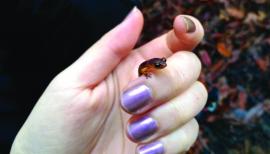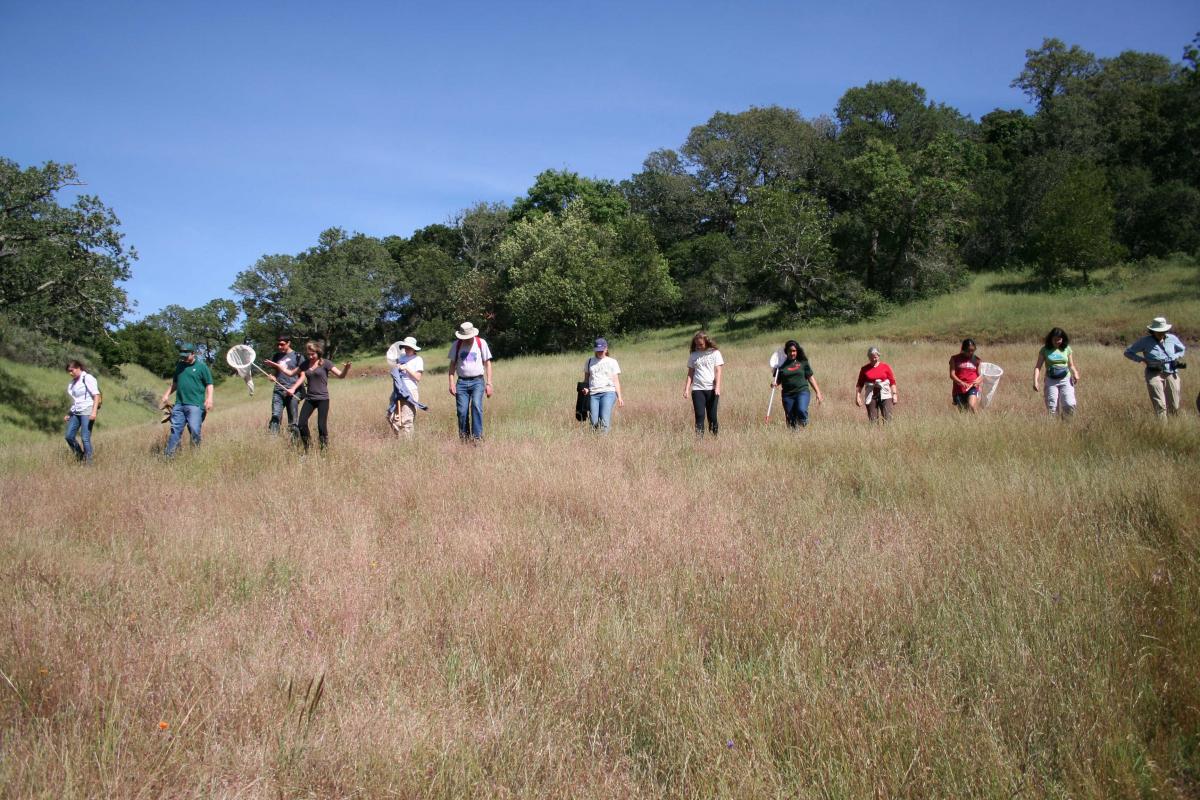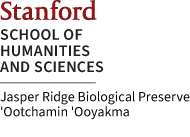What We Do


Research The area now included within the Jasper Ridge Biological Preserve has been used for scientific studies since the opening years of Stanford University. Since that time, the scientific contributions of JRBP have reflected the capacity of scientists and students at Stanford and other institutions to envision, conduct, and interpret groundbreaking research involving a range of academic disciplines. Many current studies draw on this legacy of research, while others address new questions and problems. In total, 165 dissertations and theses have involved research at JRBP, and since 1965, 335 publications have reported research at JRBP. Students have submitted over 400 papers resulting from studies at JRBP. Global Change Experiement.
The preserve is widely recognized as the site of discoveries that have been important both to fundamental scientific questions and to society. For example, Professor Paul Ehrlich's discoveries about Bay checkerspot butterflies demonstrated the unique value of long-term research in ecology, and helped foster federal programs to fund such studies. The importance of long-term research and monitoring is now widely accepted. A number of scientific publications resulting from research at JRBP discovered ecological patterns so significant they stimulated hundreds of related studies. Many of these papers by Professors Christopher Field and Harold Mooney established principles that are the foundation of the largest research program now at JRBP, a study of ecosystem responses to a suite of environmental changes that are occurring globally. A long-term monitoring project by Professor Deborah Gordon's lab has mapped the invasion of Argentine ants and used "before and after" comparisons of ecological communities in the path of the invasion to better understand the ants' impacts. These studies and others demonstrate the intrinsic connection between JRBP's missions in research and conservation.
Jasper Ridge also contributes broadly in that it is open to any qualified investigator who proposes studies that are consistent with the preserve's mission of research, education, and long-term resource protection. Proposed studies are evaluated on whether they: contribute to fundamental scientific knowledge through well-designed experiments whose results are intended for peer review and dissemination; contribute beyond the borders of JRBP by being part of inter-site comparisons or larger surveys; minimize impacts to JRBP ecosystems and to ongoing experiments and are especially suited to JRBP in some way, e.g. because of site history, specific resources, ongoing studies, or links with JRBP's education or conservation missions. See Complete List of Current Research Projects
 Education The Jean Lane Environmental Education classrooms of the Leslie Shao-Ming Sun Field Station house a diverse range of classes, lectures, workshops, and discussions. Faculty and students rely on Jasper Ridge Biological Preserve to provide an environment essential to research, teaching and learning with both formal and informal education opportunities. Tours of the preserve are conducted from October 1 through May 31 on Fridays, Saturdays and Sundays at 10:00 am and 2:00 pm. During the spring wildflower season (March and April) tours will be scheduled Friday through Sunday at 10:00 am and 2:00 pm. Tours must be scheduled well in advance. Children under 14 are not permitted. Tours typically involve 2 to 2.5 hours of walking on hilly terrain. There are a limited number of tours conducted each year and priority goes to tours that are most closely aligned with the preserve's mission "to contribute to the understanding of the Earth's natural systems through research, education, and protection of the Preserve's resources." More information on Education at JRBP
Education The Jean Lane Environmental Education classrooms of the Leslie Shao-Ming Sun Field Station house a diverse range of classes, lectures, workshops, and discussions. Faculty and students rely on Jasper Ridge Biological Preserve to provide an environment essential to research, teaching and learning with both formal and informal education opportunities. Tours of the preserve are conducted from October 1 through May 31 on Fridays, Saturdays and Sundays at 10:00 am and 2:00 pm. During the spring wildflower season (March and April) tours will be scheduled Friday through Sunday at 10:00 am and 2:00 pm. Tours must be scheduled well in advance. Children under 14 are not permitted. Tours typically involve 2 to 2.5 hours of walking on hilly terrain. There are a limited number of tours conducted each year and priority goes to tours that are most closely aligned with the preserve's mission "to contribute to the understanding of the Earth's natural systems through research, education, and protection of the Preserve's resources." More information on Education at JRBP



